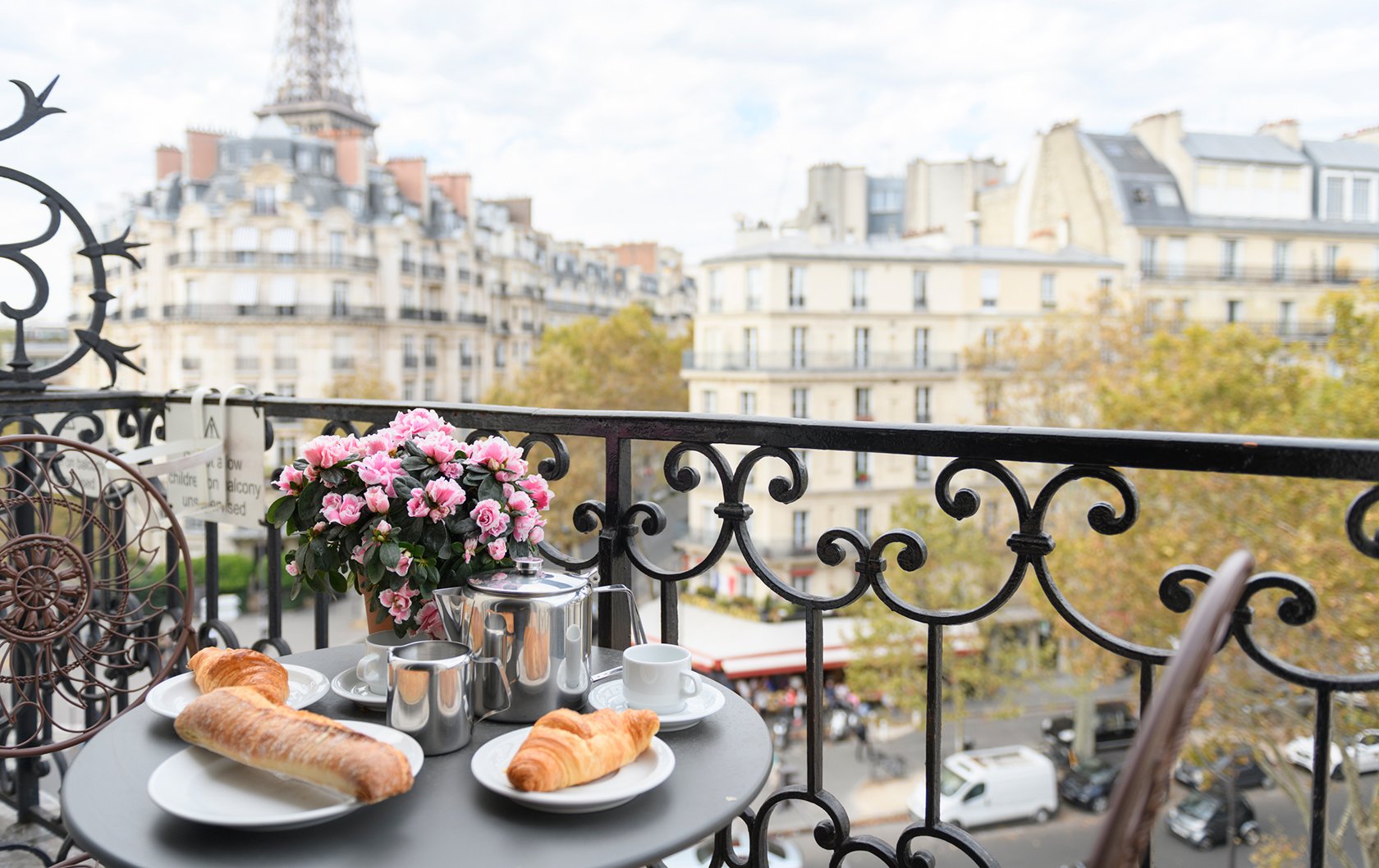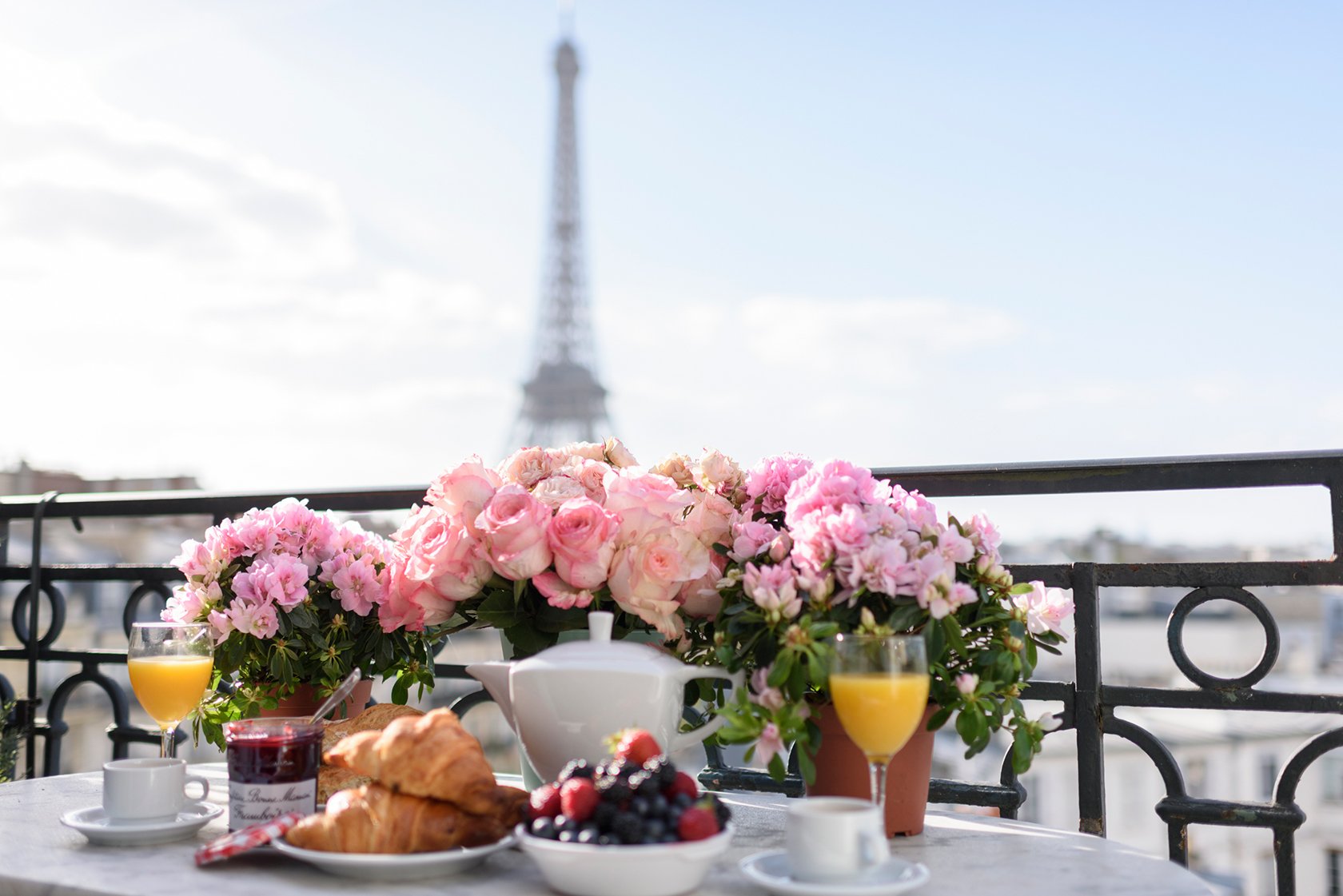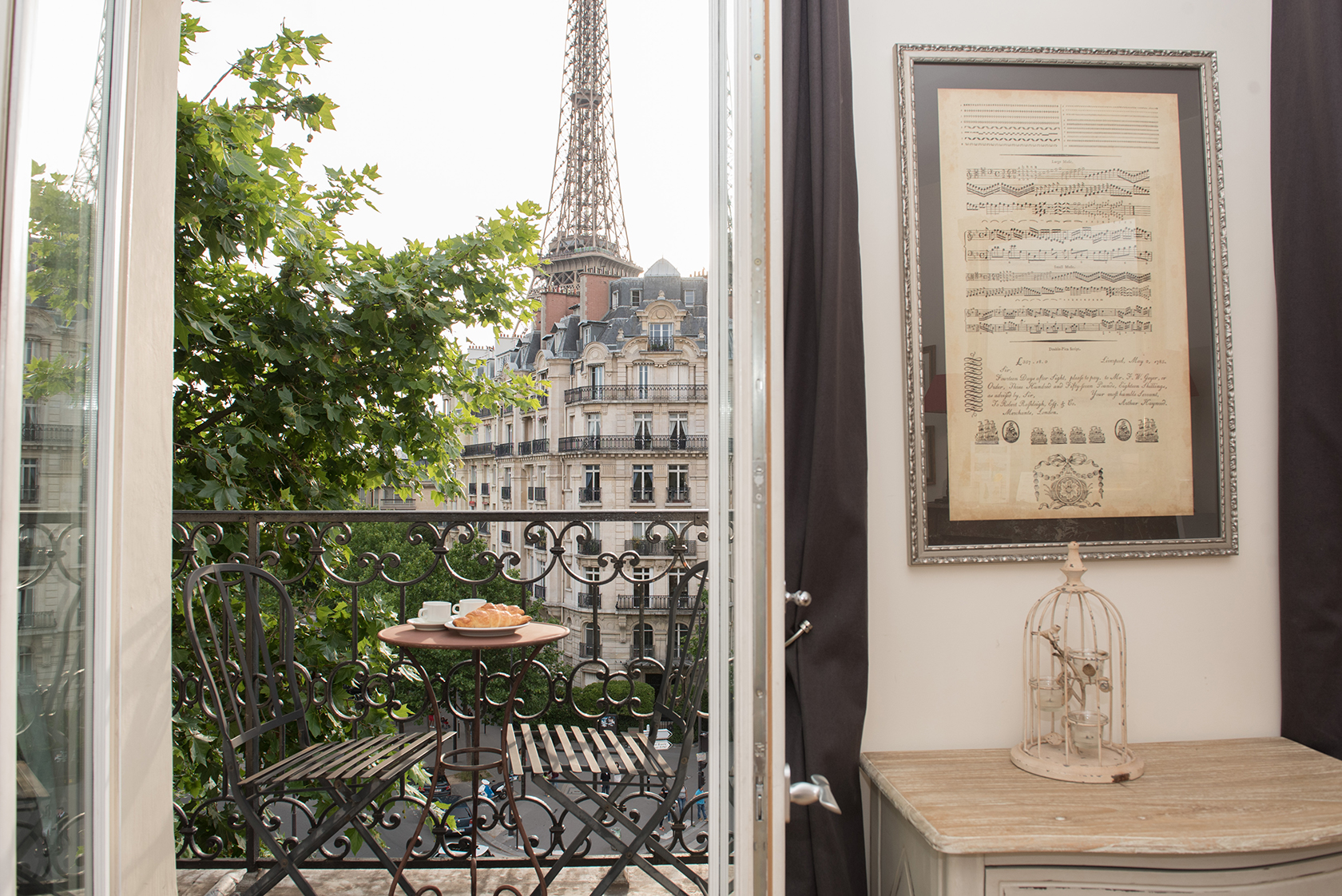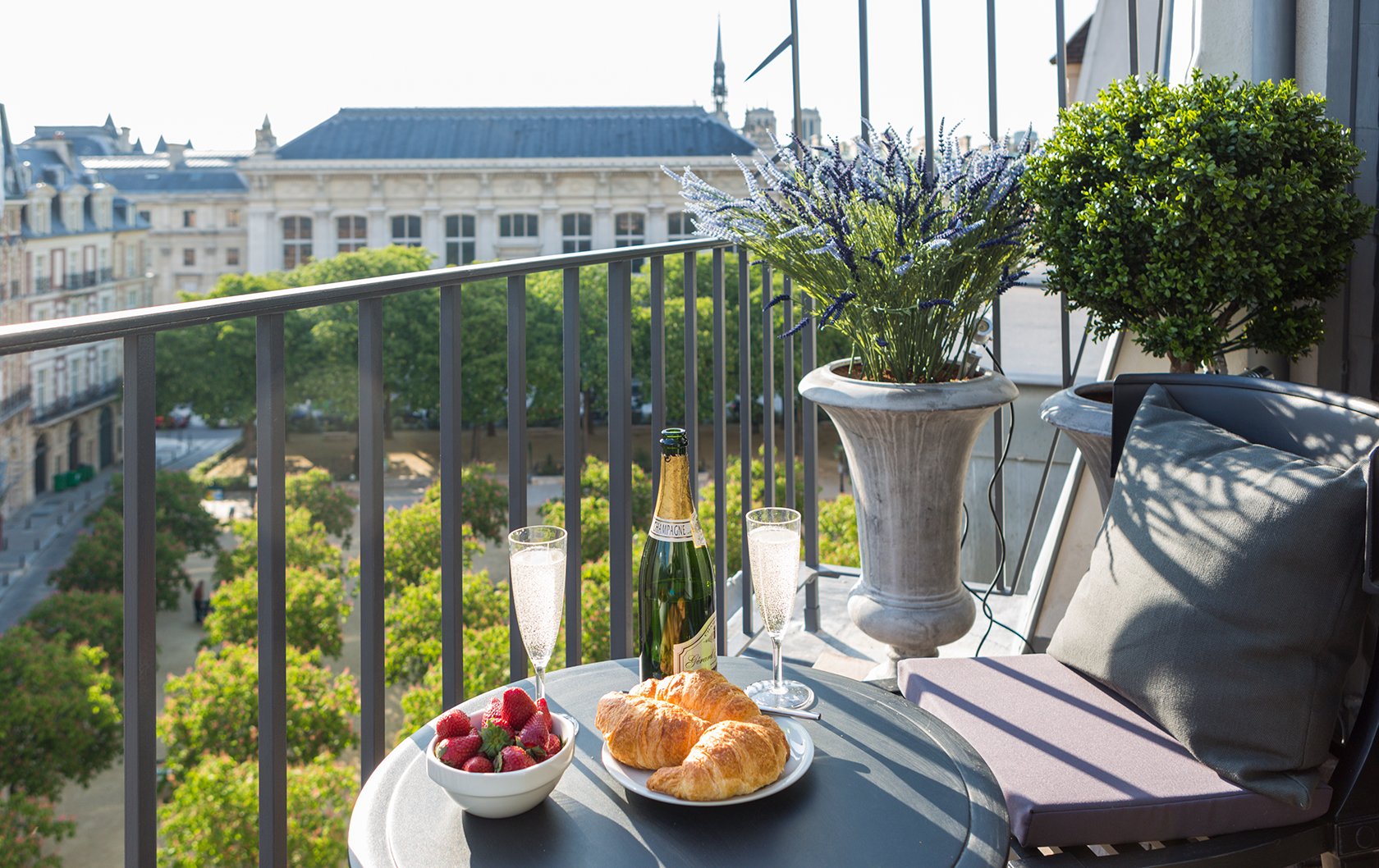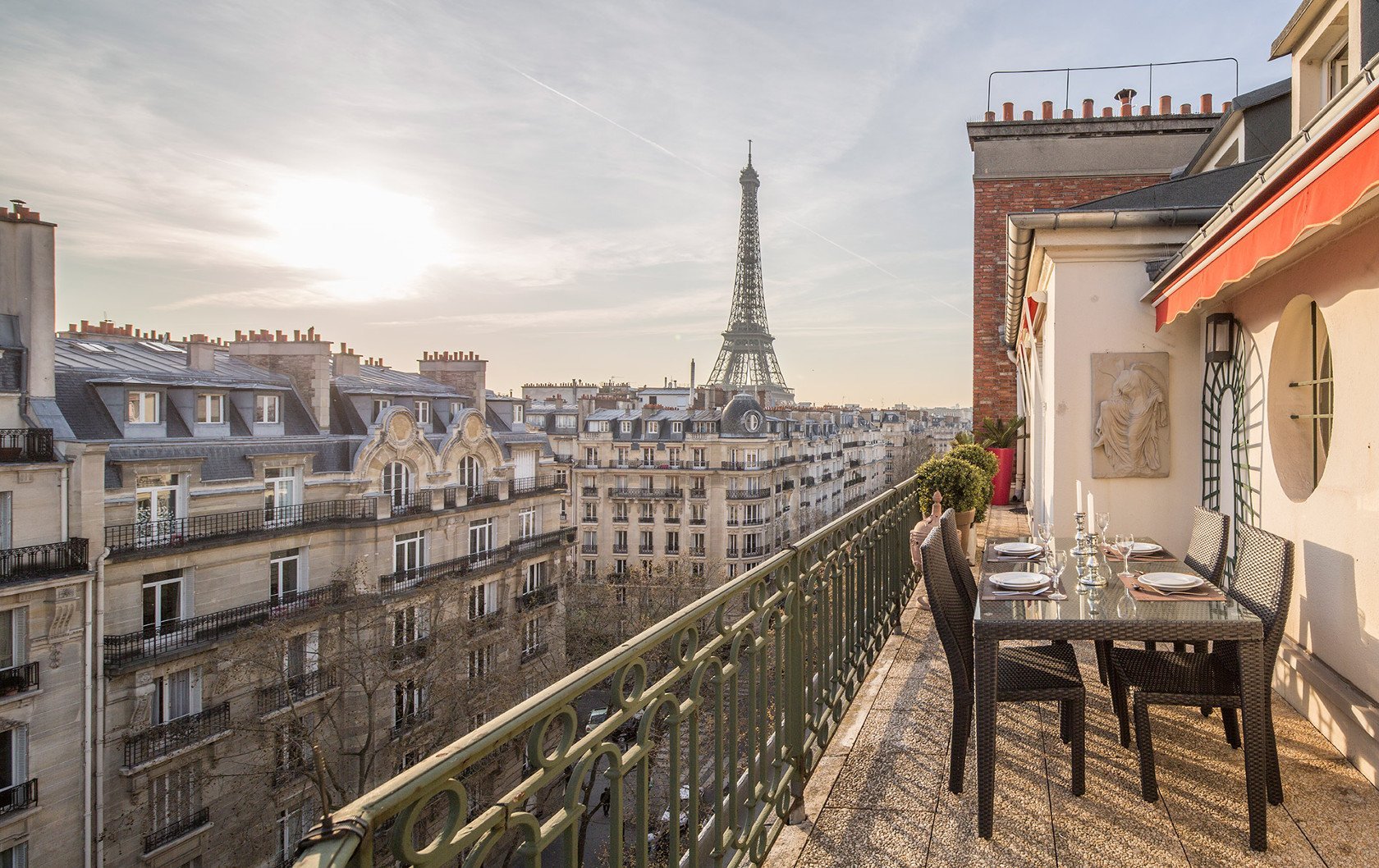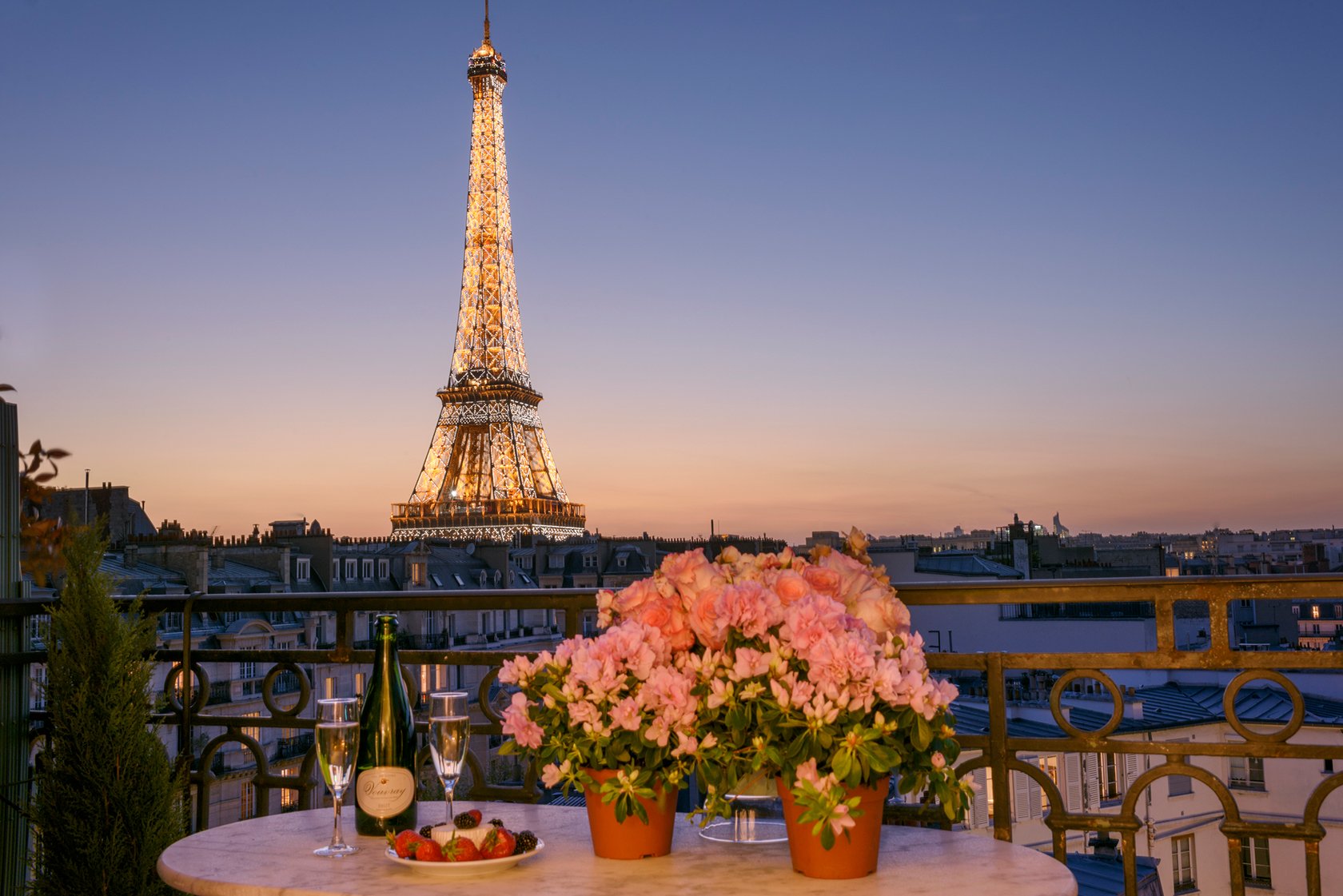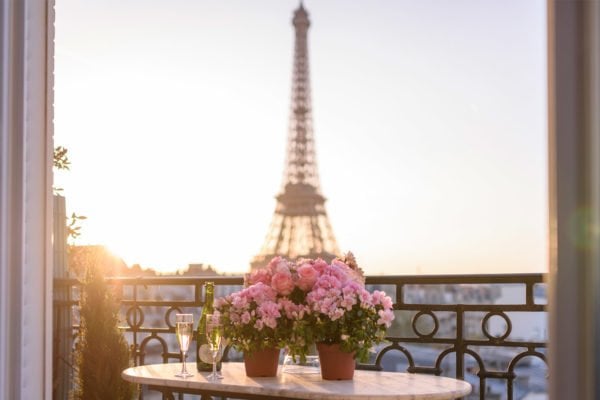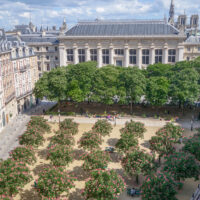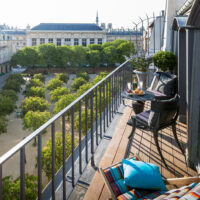Sometimes architecture is so much a part of the fabric of a city that it makes its way into our imagination without us even realizing it. We can hardly think of New York without that iconic skyline filled with gravity-defying skyscrapers, just as no image of London would be complete without a backdrop of terraced houses covered in English ivy. But perhaps no scene is as iconic as the great boulevards of Paris, lined with those romantic pale stone buildings ringed in wrought iron balconies.
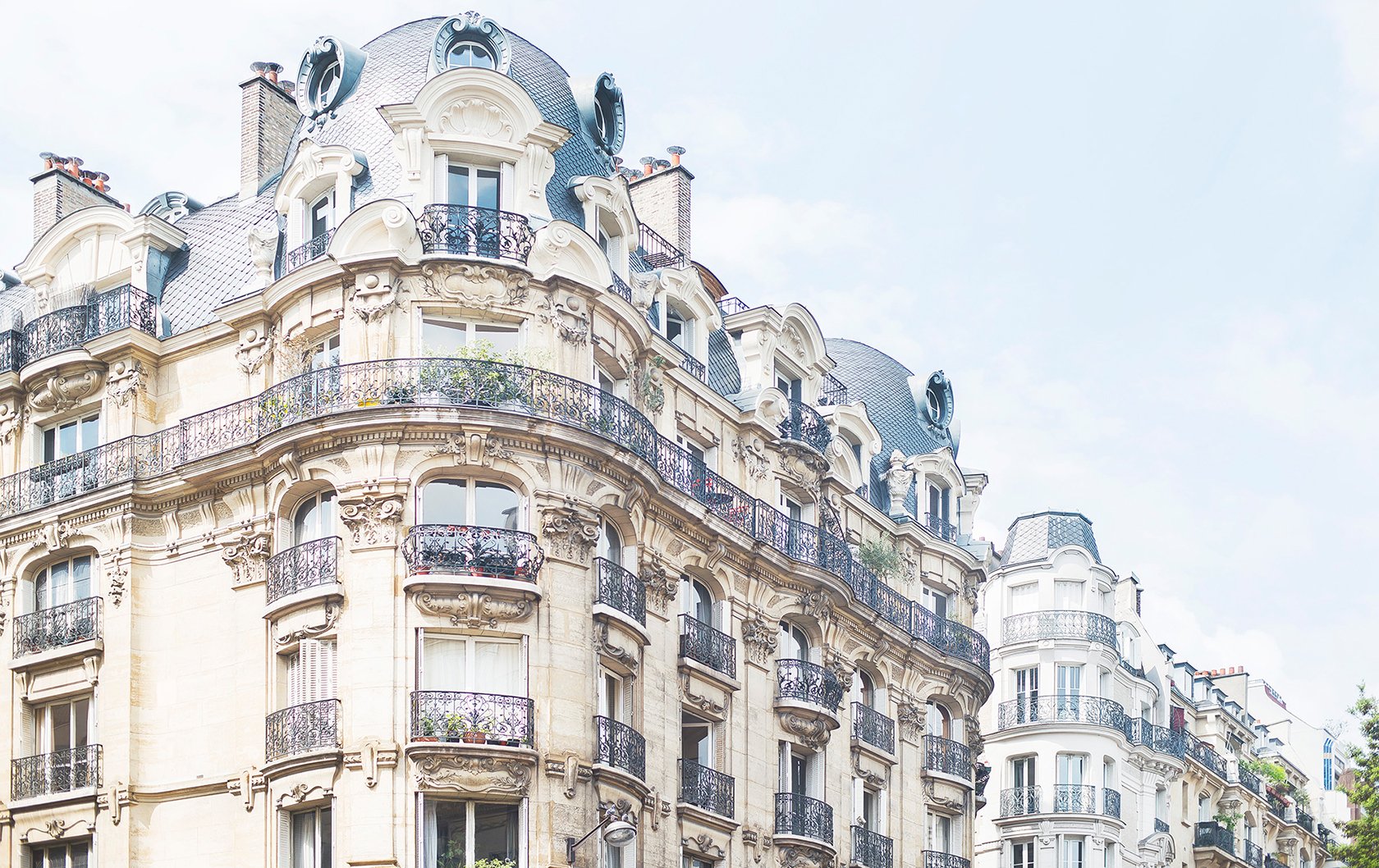
That unforgettable Parisian style
Indeed, Parisian balconies are a rarity by design, and the history of them is a history of urban planning itself. Much of modern Paris owes its aesthetic to Baron Georges-Eugène Haussmann, who was appointed prefect of the Seine region in the mid-19th century. Until that time, Paris was largely a tangle of medieval streets, narrow buildings and close quarters, all of which combined to create an urban environment that was unable to keep pace with its expanding population. Haussmann’s task was to create a cleaner, safer and more elegant city design that could accommodate both the well-to-do and the working class, and to unify the landscape through architecture. Having studied in London, Haussmann wanted to bring some of the precision he’d seen in the city to his hometown. The result of this massive infrastructure project are the wide boulevards and stately buildings of central Paris, with the unmistakable iron balconies that would become a symbol of the City of Light.
But there is more to the balcony than meets the eye, for Haussmann’s architectural details were incredibly specific and executed not just for comfort but for beauty. Indeed, he decided that while the interiors of buildings could vary, the facades followed strict guidelines, including the height (no more than six floors) and color (a cream colored, locally sourced Limestone). But balconies were even more closely regulated: the second story was called the “noble” floor, and it was here that buildings would have wraparound balconies with intricate window frames, which gave their residents precious outdoor space at an elevated point above the fray of pedestrians and horse drawn carriages. At a time before elevators, the second floor was considered a prime location, as there were less stairs to climb yet still high enough above the street to have a view.
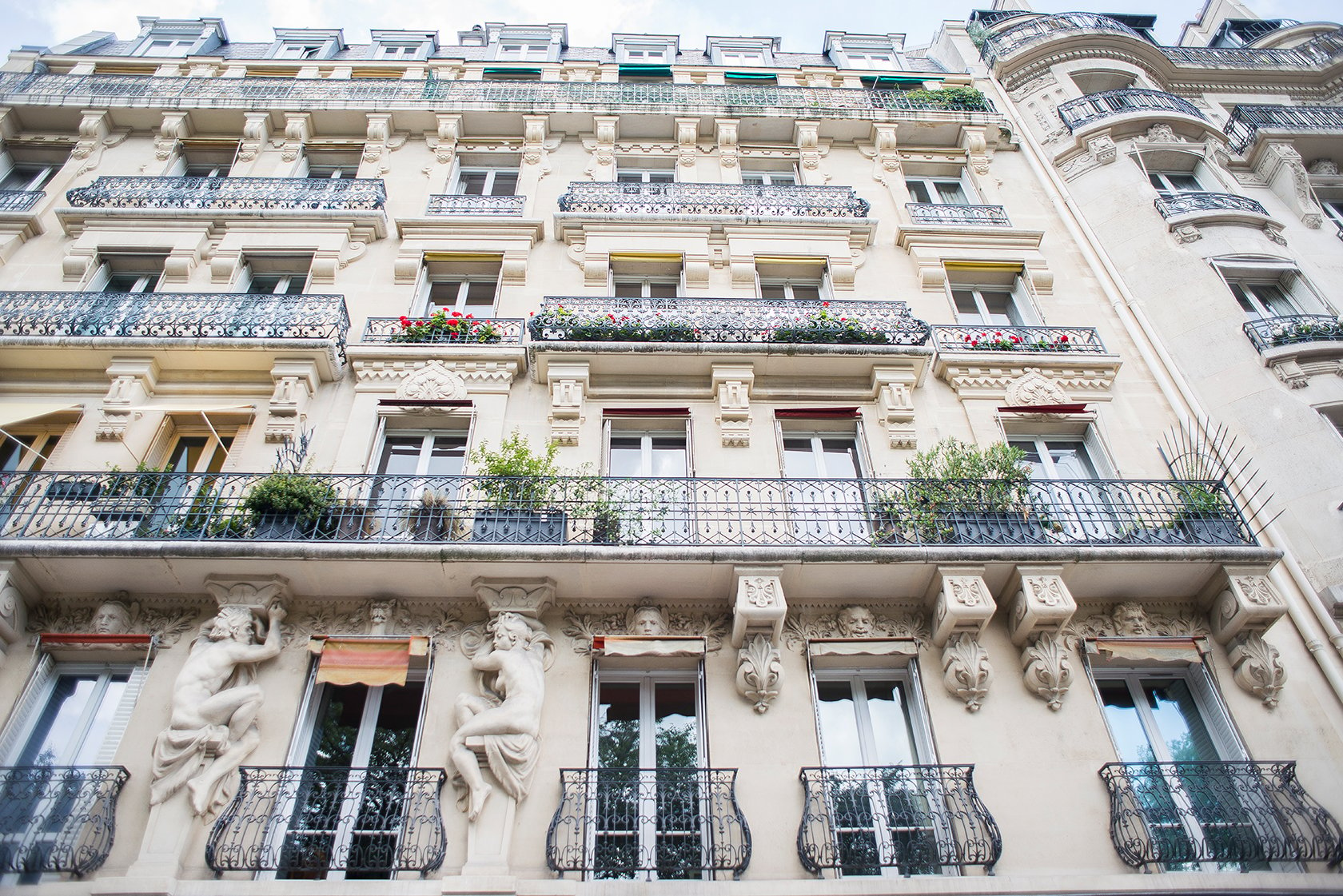
A beautiful building in the 7th arrondissement
But Haussmann’s vision did not stop there, and he wanted the buildings themselves to reflect the symmetry and order of this new city. The third, fourth and sometimes fifth floors would have smaller balconies fitted to the windows and less ornate carvings, and a wraparound balcony would also line the top floor of the building to balance against the more grand design below. These higher floors were not given the same distinction as the “noble” stories in those early days, but with the advent of elevators and their installation into many of those classic buildings, the balconies higher above the city became just as prized, if not more so, than their counterparts.
As the city evolved and millions of people flocked to it from all over the world, the chance to stay in one of these quintessentially Parisian buildings has become a dream for aspiring artists, hopeless romantics and intrepid travelers. There is truly no greater joy than a morning coffee or afternoon glass of wine on one of those precious pieces of real estate in the middle of the city. No matter how big or small, a Parisian balcony is part of history, a place to gaze upon the rooftops and along the boulevards of one of the most glorious cities in the world. Haussmann wouldn’t have had it any other way.
The simple pleasure of a Parisian balcony isn’t always that easy to find, but we do seem to have a talent for sniffing them out all over the city center. Monbazillac and Savennières, two of our apartments at historic La Place Dauphine, are perfect examples of the kinds of hidden jewels that are nestled within Paris. Overlooking Place Dauphine in the Ile de la Cité, the building actually dates from 1610 and is set on the square that was constructed at the behest of King Henri IV. Who knows? Maybe these very buildings were the ones that inspired the transformation of Paris into the city it became.
We love the tranquillity and charm of the 7th arrondissement, and it’s one of the best places to situate yourself for a Parisian holiday. Our Champagne apartment has been described by guests as “one of the most romantic escapes in Paris,” and the seven French doors leading to the wraparound balcony certainly help it live up to the label. The three bedroom Margaux apartment is a rare find not just for its size, which can comfortably accommodate up to 8 people, but for the sun filled balcony that’s big enough to dine al fresco with the city below you.
The Chateau Latour apartment has views across the city, and the extra wide space means that you can toast to your trip as the sun glints off of the rooftop of the Sacre Coeur. The Bordeaux apartment brings the outside in with the wrought iron balcony just outside of your living room, making you feel like you’re stepping into the city without ever leaving home. Of course, the best part about having an apartment with a balcony in the 7th? The Eiffel Tower stands majestically in front of you and turns your balcony into the best seats in the house. Paris may be the City of Light, but from here it feels like they shine just for you.
